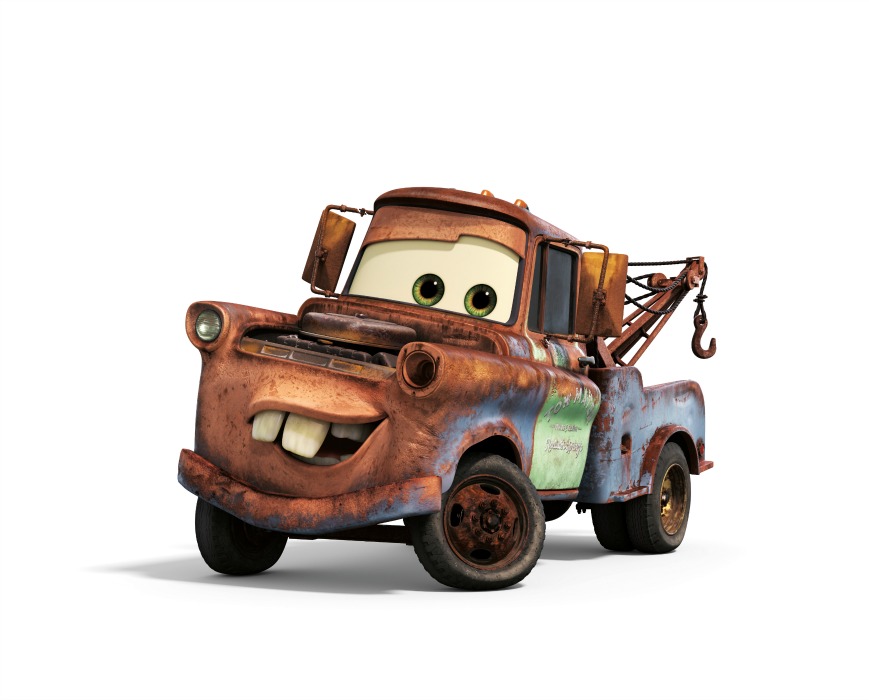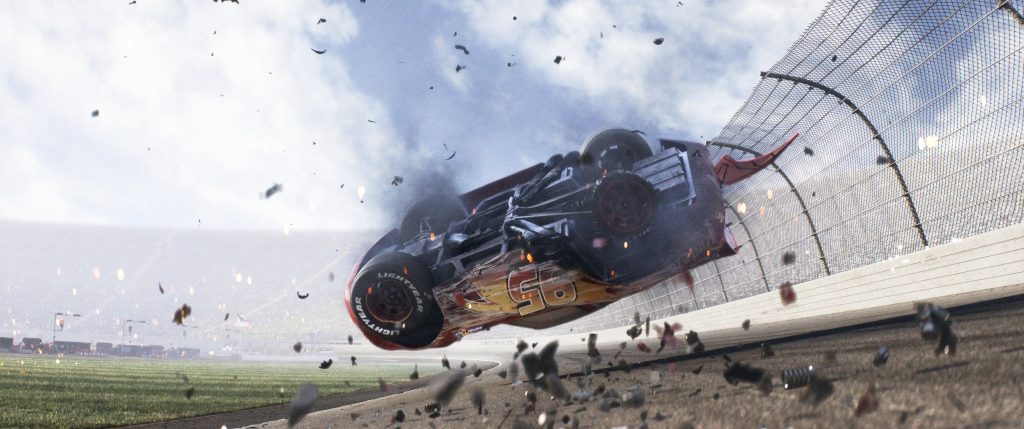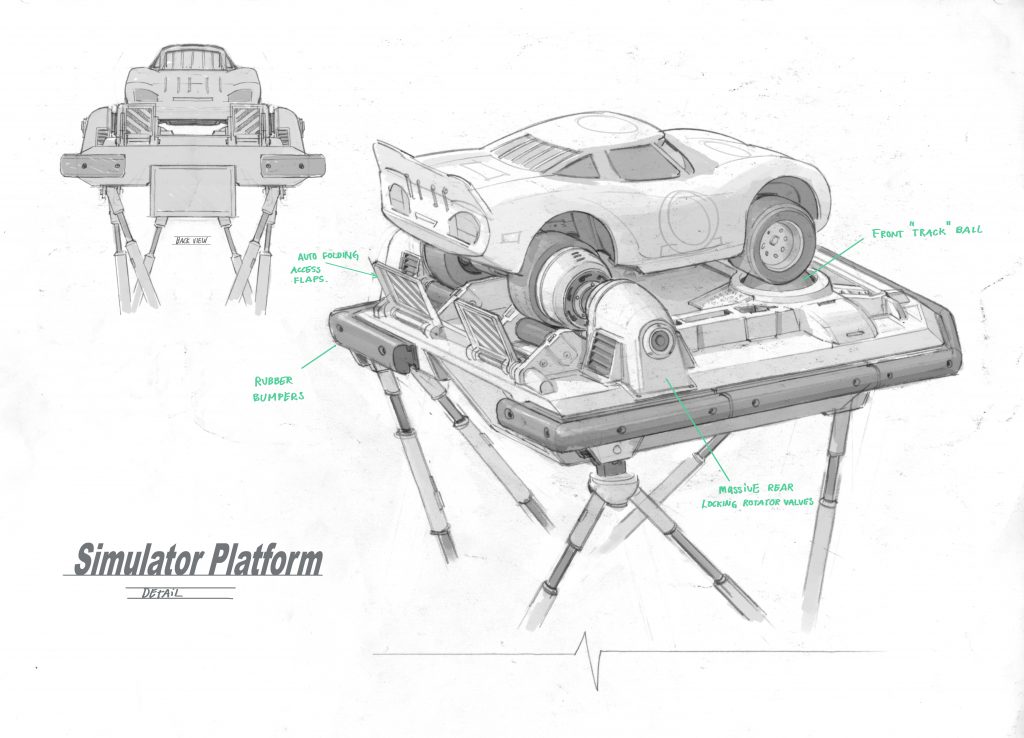Being a movie geek who pours over behind-the-scene footage and storyboard sketches, I relished our group interviews with the magical technical professionals of the up-coming Disney/Pixar summer blockbuster highly-anticipated motion picture: Cars 3, racing to theaters on June 16th.
In March, we were invited to a media press event that included the release of Disney/Pixar’s CARS 3, the new Disneynature film BORN IN CHINA and the new ABC toy-competition series THE TOY BOX! To read about all my once-in-a-lifetime trip, check out: “Join us on a trip to San Francisco with Disney, Pixar and ABC March 27-29”
I had the rare opportunity to hear from Bobby Podesta (Supervising Animator), Michael Fong (Supervising Technical Director) Jon Reisch (Effects Supervisor) and other top artists in the animation business, about their experiences with the technical challenges and achievements during the making of Cars 3.
Pixar films are emotionally tangible.
Pixar films are grounded in something universally felt or experienced, which is usually emotional tangible. Something that you can connect with. They want characters to be somewhat familiar, to help strengthen the bond with the audience. Mater is an example of “that guy that everyone knows in a group”: a little slow, rusty, but loyal.
For Cars 3, the writers had to take Lightning McQueen to a different stage in life. This time, he is not the youngest and fastest race-car on the track. Have you ever been at a crossroads in life where you feel really out of place? Then you can understand what McQueen is feeling – out of his element.
Effects are able to help tell the story.
Do you remember being mesmerized by the crystal-clear blue ocean water in Finding Nemo? Or the realistic strand of Merida’s hair in Brave? The Effects artists’ make sure that the visual components are believable with the characters and do not distract or interrupt the story.
Water, fire, smoke, skid marks, tire peel-outs and even mud are some of the more complex pieces of an animated movie. The sense of realism and detail helps the audience identify with the characters.
Physical simulator-effects software is a valuable tool to ensure the reality of the story. Staying within the laws of motion and physics play a key part in maintaining a real-world feel around the racetrack. The velocity of the car, how fast the wheel is spinning, the traction, tire smoke, skid marks, and air flow around the cars all give weight and balance to each effect and character.

CRAZY 8 DRAMA — In “Cars 3,” Lightning McQueen (voice of Owen Wilson) hits the road in an effort to reignite his career. Along the way, he finds himself in the middle of a smash-and-crash, figure-8 race, facing off against local legend Miss Fritter, a formidable school bus who—like #95 himself—doesn’t like to lose. Featuring Lea DeLaria (Netflix’s “Orange is the New Black”) as the voice of Miss Fritter. ©2017 Disney•Pixar. All Rights Reserved.
Mud was the toughest effects job on the film.
Mud – what’s so hard about it? If you think about it, it really is not solid or liquid all the time, which makes it tricky to simulate. The cars needed to get stuck in the mud, so the artists started with a chunky oatmeal and soup consistency.
After several experimental attempts with half a dozen other departments (shaders to make sure that the mud edges were wet, lighters ensure that the mud was responding appropriately to the lights, etc.), the talented crew at Pixar was able to produce another level or scale of effects visually to dazzle the audience. When the effects work helps the film as a whole is when they are successful. It gives them a chance to shine.
Pixar’s greatest challenge is also its greatest accomplishment. The entire production pipeline is built around the fact that story is constantly changing. Technical and other departments must be able to absorb these changes.

NEXT-GEN COMPETITION – In Disney•Pixar’s “Cars 3,” a sleek, new generation of racers hits the track, including frontrunner Jackson Storm, who threatens Lightning McQueen’s championship status and forces him to rethink his strategy. With Owen Wilson and Armie Hammer as the voices of Lightning McQueen and Jackson Storm, “Cars 3” opens in theaters nationwide on June 16, 2017. ©2017 Disney•Pixar. All Rights Reserved.
Character creation: “The designs are characters first and vehicles second”
All through character design and production, there is constant attention to detail. For example, the relationship between the car eyes and mouth needs to reflect precise emotion and attitude. Too far of an angle could produce a ‘spacey’ look, or too close together could look uncharacteristically sinister.
“McQueen is round and flowing. Storm had to be angular and sharp.” Sleek next generation Storm is low to the ground, like a stealth fighter, as opposed to McQueen who is in an upright posture. Periodically sketches were shared with Daytona 500 to gauge and get their blessing.

CARS 3 (Pictured) – Cruz Ramirez visual development progression. Design by Bob Pauley, Model by Andrew Schmidt and Sculpt by Jerome Ranft. ©2017 Disney•Pixar. All Rights Reserved.
Character creation: “Cruz Ramirez was based on an American Muscle Car, with more European sports car styling.”
Talented comedic charmer Cristela Alonzo inspired the new race car character in Cars 3, Cruz Ramirez. Cruz brings a unique design challenge. She is not a standard race car, but is a strong female character who has to meet the next generation race car at their level. She is a powerful trainer, who is full of enthusiasm and energy but out of control in the real world.
Cruz was created to have a look somewhere between McQueen and Storm – ample creases and edges to appear modern, yet with flowing elegant shapes. Cristela’s facial expressions, comic timing and big personality was easily translated into the character.
Character creation: “How are characters created?”
Concept art is taken from the art department and brought into the computer, with digital sculpting, digital shading and painting, and then digital rendering.
Step 1: Characters were brought back from Radiator Springs – in model clay form. The clay sculpture does not move and cannot be posed. There is no shading or paint. How does the model go from grey to color?
Step 2: A team of shading and paint artists digitally create different pieces of the car, that can be controlled and manipulated, like color, shininess and reflectivity. Decals, stickers or graphics can be placed on the vehicle too!
Step 3: Character Rigging. After shading and remodeling the character, the model is put into various poses, called ‘rigging’. This virtual puppet version of the character makes for easier control of the face, body and wheels. With each slight movement, the computer software easily connects the pieces naturally, so the relationship between the mouth and eyes gives the realistic appearance of smirking for example without being disjointed and distracting.
Step 4: Rendering Software. Following the sketch model process, digital modeling makes for smoother editing and control for details. For example, Cruz’s headlight needed to be less reflective so light would not bounce in the wrong direction.
The cutting edge software technology allows the artists to respect the laws of physics and therefore be true to materials and details.
Make sure to check out Cars 3, in theaters everywhere on June 16th.
Like CARS on Facebook: https://www.facebook.com/PixarCars/
Follow CARS on Twitter: https://twitter.com/pixarcars
Follow CARS on Instagram: https://www.instagram.com/pixarcars/
Subscribe to the Disney/Pixar YouTube channel here: https://www.youtube.com/user/DisneyPixar
Visit the official CARS 3 website here: http://movies.disney.com/cars-3




Leave a Reply